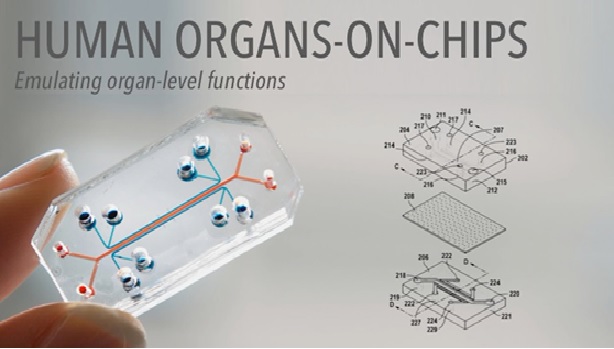An Organ-on-a-chip (OoC) To Mimic Human Immune Functions
Organ-on-a-Chip technology has the potential to mimic complicated body illnesses by simulating various organ functions on a chip. Researchers from Harvard University’s Wyss Institute for Biologically Inspired Engineering have employed microchip manufacturing technologies to develop microfluidic culture devices that imitate the intricate shapes and functioning of human organs – including the liver, kidney, and brain tissues. [1]

Figure 1. An Organ-on-a-chip (OoC) To Mimic Human Immune Functions
Figure 1 shows the goal is to reduce animal testing and speed up drug development. The microdevices are typically made of a clear, flexible polymer with microfluidic channels lined with human organ and blood vascular cells. These channels range in size from 10 to 100 micrometres in diameter, but they have a vast surface area and high mass transfer, allowing the observer to see how medications affect them. [1]
Realizing Organ-on-a-Chip
An OoC generally consists of three major components:
- Microfluidics
- Cell tissues
- Sensing mechanisms
The target cells are delivered at a location using microfluidics through its system for fluid input and discharge.
The cell tissues are components that align a particular cell in a 2D or 3D shape. For 3D arrangements, biocompatible hydrogels help to prevent damage. The sensing mechanisms can help detect and compile the data, and it can be an embedded system or a transparent system for visual evaluation.
For transparent chips, various imaging techniques can be helpful to assess the cellular-level activity. The embedded systems use biosensors for monitoring models with metabolic activities, barrier functions, and electromechanical properties. [2]
General advantages of organ-on-a-chip technology
Organ-on-a-chip technology is a significant advancement in biomedical engineering that provides multiple advantages. The formation of compartments inside the microfluidic device increases control of the microenvironment by confining cells. The laminar structure of the micro channels also allows for the formation of sub-compartments.
Such compartmentalization provides the advantage of imposing constraints to precisely control physical conditions and manipulate communication between tissue types. Organ-on-a-chip technology can also produce an optimal supply of nutrients and oxygen along with the efficient removal of catabolic metabolites. [3]
References:
- https://www.electronicsforu.com/news/whats-new/an-organ-on-a-chip-ooc-to-mimic-human-immune-functions
- https://www.allaboutcircuits.com/news/wyss-institute-aim-at-replicating-immune-system-on-a-chip/
- https://www.news-medical.net/life-sciences/What-is-Organ-on-a-Chip-(OOC).aspx
Cite this article:
Thanusri swetha J (2022), An Organ-on-a-chip (OoC) To Mimic Human Immune Functions, Anatechmaz, pp. 230

